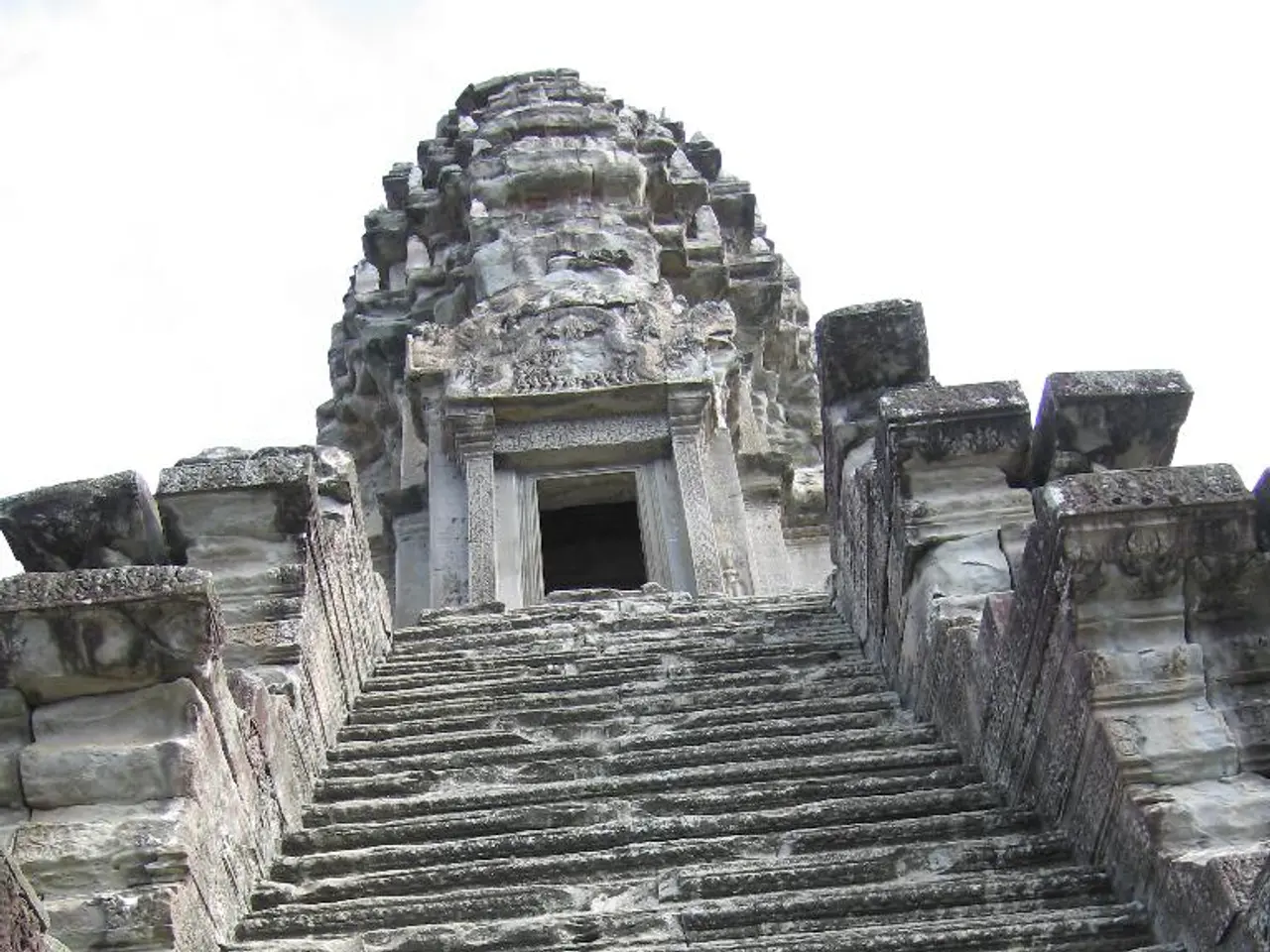Travel Enthusiasm: Bettany Hughes Discusses the Seven Marvels of the Ancient World
In the heart of the ancient Mediterranean and Middle Eastern civilizations, a legendary list of architectural and artistic achievements emerged, each encapsulating something special and important about the human experience. These wonders, celebrated for their scale, ambition, and symbolic significance, are known as the Seven Wonders of the Ancient World.
The list, originating with a 2nd-century BCE writer Antipater of Sidon and later refined by Philon of Byzantium, includes:
- The Great Pyramid of Giza, the oldest and only surviving wonder, showcasing incredible engineering from ancient Egypt.
- The Hanging Gardens of Babylon, famed for their mythical landscaped terraces, though their precise historical existence and location remain debated.
- The Statue of Zeus at Olympia, a massive, ornate gold and ivory figure by Phidias representing the chief Greek god.
- The Temple of Artemis at Ephesus, noted for its grand scale and artistic adornment.
- The Mausoleum at Halicarnassus, an elaborately decorated tomb.
- The Colossus of Rhodes, a giant bronze statue celebrated for its imposing stature.
- The Pharos Lighthouse of Alexandria, an architectural marvel aiding navigation in the ancient world.
These wonders were not only monumental constructions but also deeply connected works that exemplified human creativity, cultural values, and technological prowess of their time. As described in the 2024 BBC History Magazine article by Bettany Hughes, these wonders were known as thaumata—works that demanded to be seen. Each wonder symbolized something important about the human experience, from religious devotion to imperial power.
The Mausoleum of Halicarnassus, built by Mausolos and his wife Artemisia in c351 BC, was a site of death and glory and a hybrid of various styles including Assyrian, Egyptian, Greek, and Karian. Artemisia, the wife of Mausolos, became infamous through history thanks to an anecdote that she ground down her husband's bones to drink them after his death.
The Temple of Artemis at Ephesus, destroyed in the mid-fourth century BC and rebuilt in c340 BC, was a model for Greek temples across three continents, with its double row of columns. Some of the artists employed on the later building of the Temple of Artemis at Ephesus also worked on other Wonders, such as the Mausoleum of Halicarnassus. The Temple of Artemis at Ephesus was also a place of sanctuary.
The Colossus of Rhodes, a giant statue of the sun god Helios that stood over the harbor of Rhodes, was a symbol of Rhodian power and prosperity. The Pharos Lighthouse of Alexandria, built by Ptolemy I Soter to guide ships into the harbor of Alexandria, was a marvel of engineering and a testament to the city's wealth and influence.
Each of these wonders was interrelated, sometimes sharing artists and design motifs, and they drew travelers of antiquity such as Alexander the Great—reflecting their cultural importance and the connectivity of the ancient world. The historical significance of the Seven Wonders lies in their role as early exemplars of monumental ambition that continue to inspire curiosity and archaeological efforts today. For instance, recent underwater excavations have partially recovered remains of the Lighthouse of Alexandria, opening new possibilities for understanding and digitally recreating these ancient marvels.
Bettany Hughes’s personal journey retracing the locations of these wonders underscores their enduring legacy and the ways ancient landscapes shaped human history and imagination. Her exploration contextualizes the wonders not merely as static relics but as dynamic cultural symbols that were built, worshipped, fought over, and remembered across millennia.
In summary, the Seven Wonders of the Ancient World celebrate the extraordinary achievements of ancient civilizations, symbolizing mankind’s quest to create works of lasting beauty and awe, and Bettany Hughes’s article and documentary provide a rich narrative connecting their historical, cultural, and human significance.
- The architectural marvels of the Seven Wonders, such as the Temple of Artemis at Ephesus and the Mausoleum of Halicarnassus, were not only prestigious monuments of their time but also attracted travelers seeking cultural experiences, mirroring the resonance these wonders still hold today.
- Beyond their grandeur, the Seven Wonders of the Ancient World—including the Colossus of Rhodes and the Pharos Lighthouse of Alexandria—were deeply interconnected, symbolizing various aspects of human experience, from artistic creativity to imperial power, which inspired travelers like Alexander the Great and continue to stimulate archaeological inquiries and creative reconstructions in modern times.




